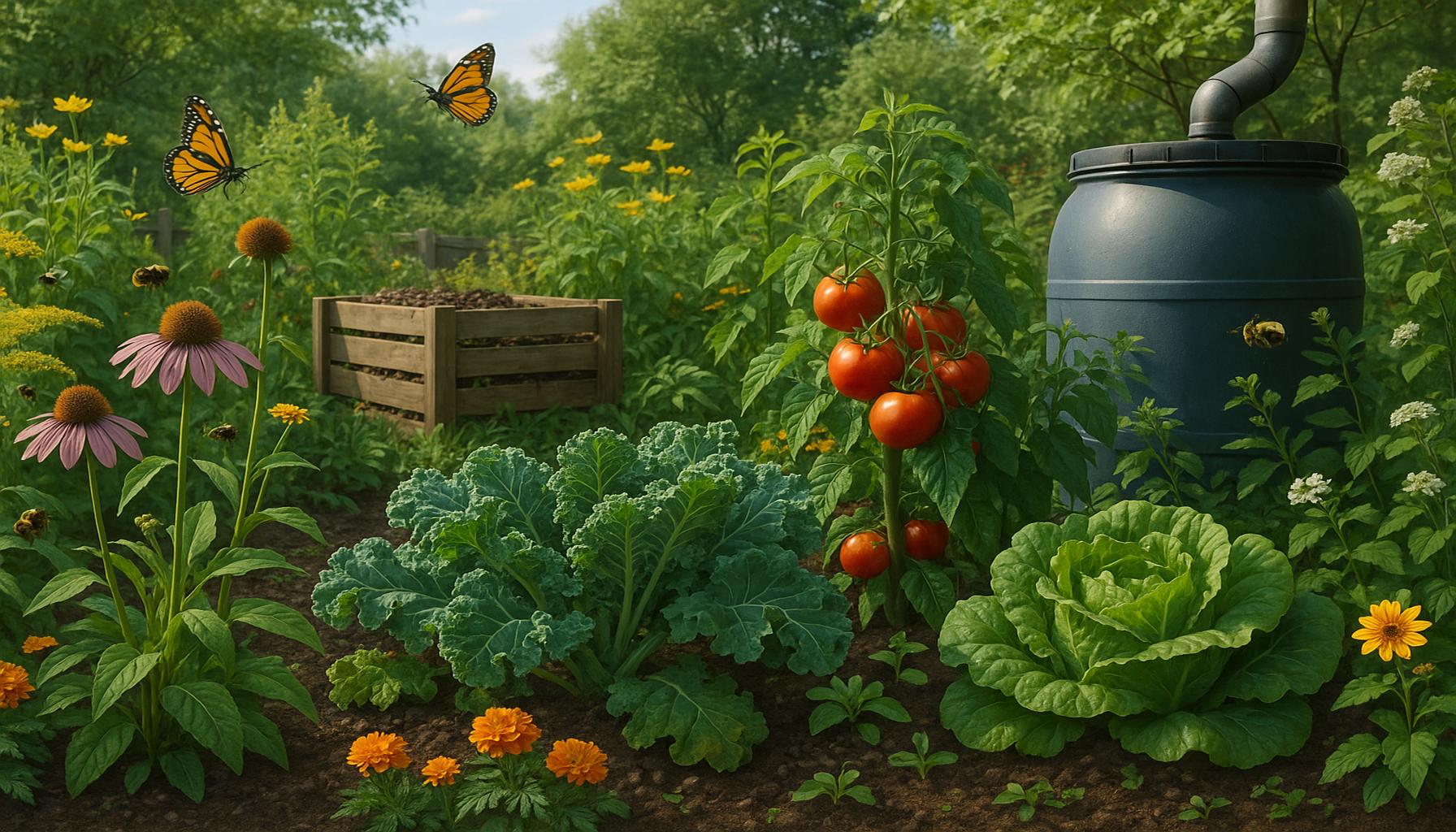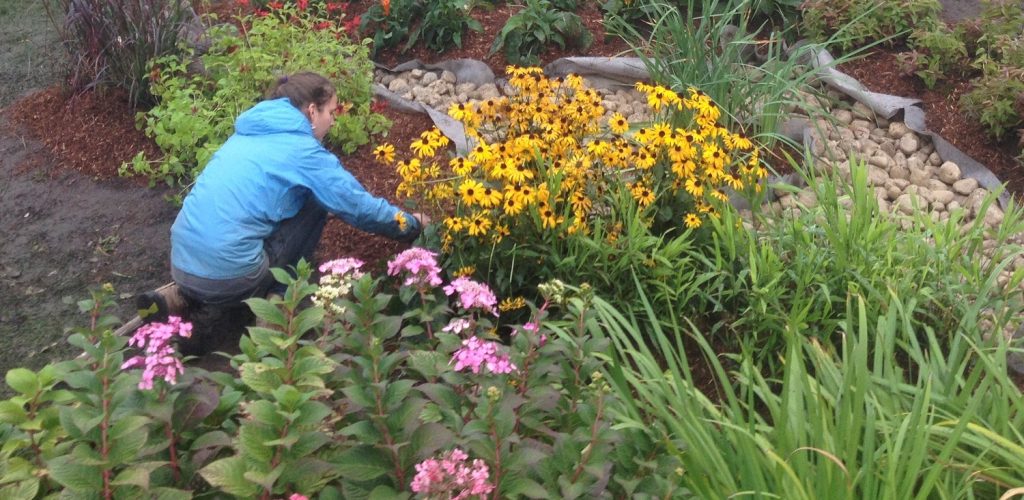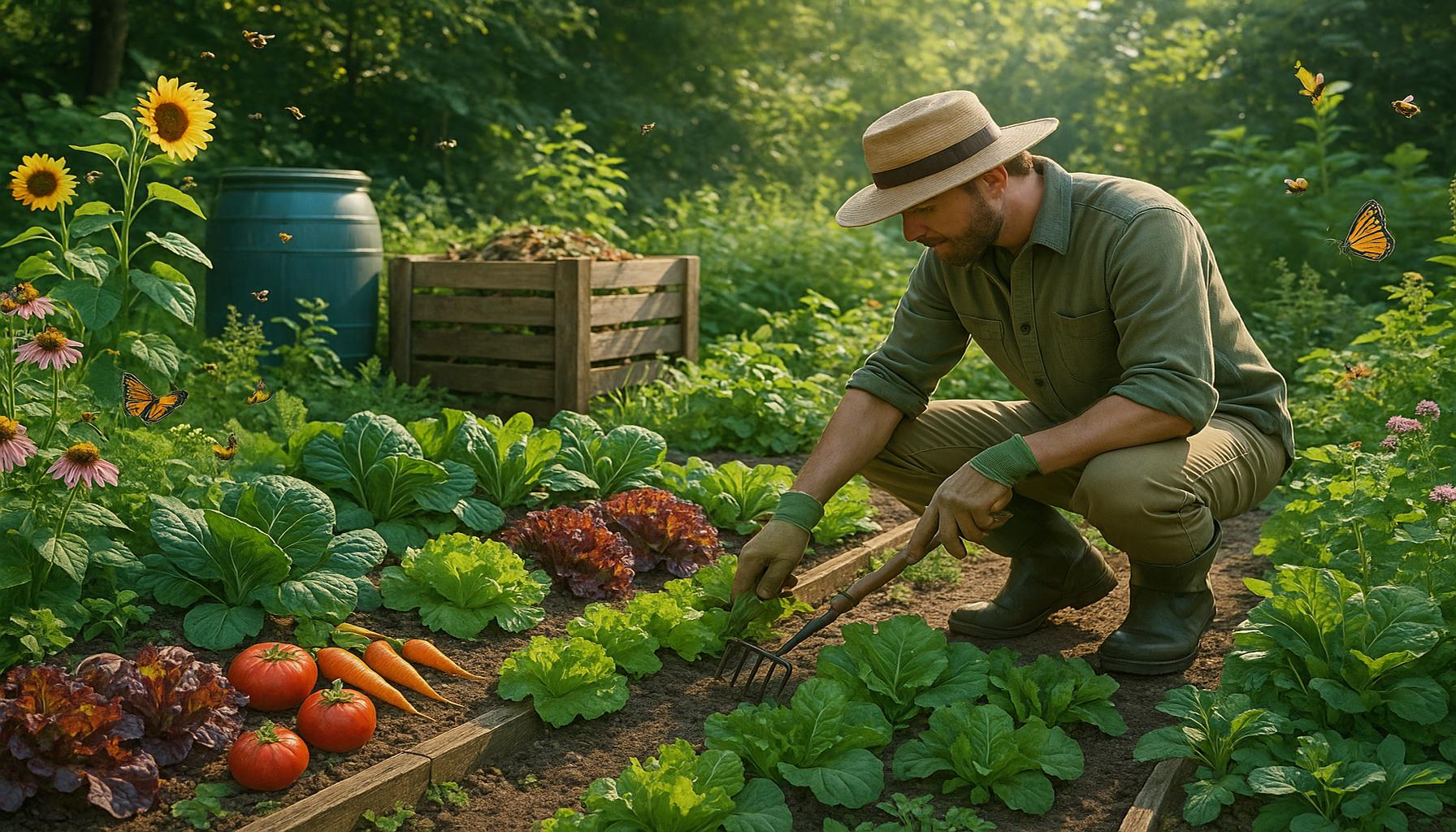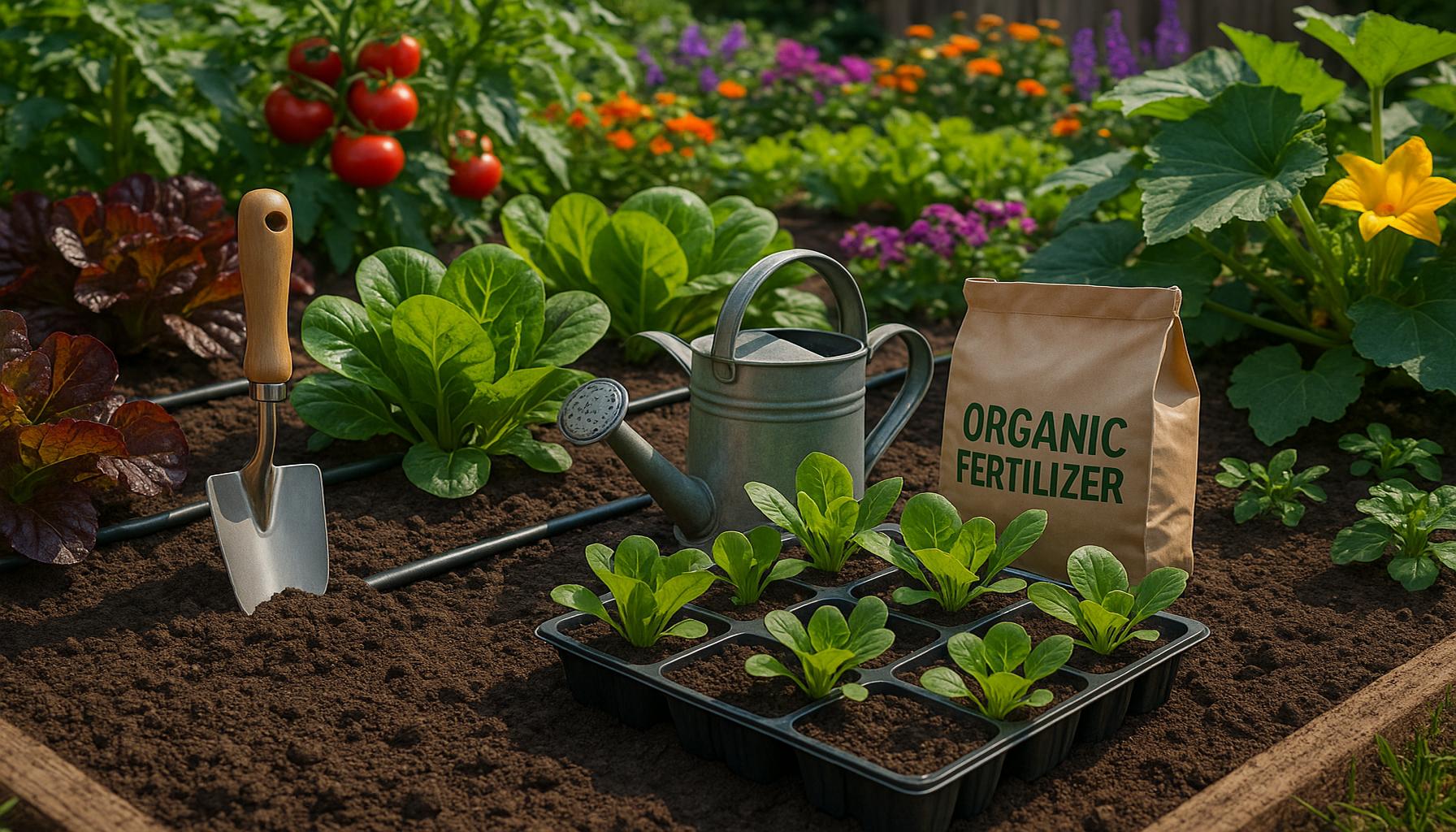Sustainable Gardening How to Create an Eco-Friendly Garden

Introduction
In today’s world, where environmental concerns are more pressing than ever, the concept of sustainable gardening has gained significant traction. This creative hobby not only enhances the beauty of our surroundings but also contributes to environmental preservation. By adopting eco-friendly practices, gardeners can cultivate spaces that are as beneficial to nature as they are enjoyable for humans.
Sustainable gardening involves various principles that promote biodiversity, conserve resources, and minimize waste. It is essential to understand that small changes in our gardening habits can lead to remarkable impacts. Here are some key reasons why sustainable gardening is important:
- Reduces carbon footprint: Sustainable practices lower greenhouse gas emissions.
- Promotes healthy ecosystems: Encouraging biodiversity supports local flora and fauna.
- Conserves water: Implementing efficient irrigation techniques helps preserve this vital resource.
For those looking to delve deeper into sustainable gardening, we’ve compiled a Top 5 list of eco-friendly methods. This guide will provide practical insights to help you create a garden that harmonizes with the environment and promotes a sustainable lifestyle.
Top 5 Sustainable Gardening Practices for an Environmentally Friendly Garden
Gardening is not just a hobby; it’s an avenue for connecting with nature that also provides a meaningful opportunity to engage in sustainability. As environmental awareness grows, many gardening enthusiasts are discovering ways to create gardens that are not only aesthetically pleasing but also respectful of our planet’s delicate ecosystems. Below, we explore five essential practices to cultivate a sustainable garden that contributes to a healthier and more balanced environment.
5. Choosing Native Plants
Embracing native plants in your garden is a cornerstone of sustainable gardening. These are the species that have naturally developed in your area over centuries, adapting to the specific regional climate and soil conditions. Choosing native plants offers a multitude of benefits, including:

- Biodiversity Support: By providing natural habitats and food sources, native plants sustain local wildlife, from beneficial insects to birds and mammals, thereby enhancing biodiversity.
- Low Maintenance: Native plants generally require fewer resources for survival. They are acclimated to local weather patterns, making them less dependent on water, fertilizers, and pesticides, which translates to reduced maintenance time and cost.
- Soil Health: The well-established root systems of native plants improve soil structure, fostering nutrient cycling and helping to prevent erosion by firmly anchoring the soil.
The choice of native varieties minimizes the need for synthetic chemical inputs and empowers you to craft a self-sustaining garden ecosystem. For instance, if you live in the prairies, consider planting milkweed to support monarch butterflies—a crucial native ally.
4. Composting Kitchen and Yard Waste
Composting transforms everyday kitchen scraps and yard waste into a valuable resource that enriches garden soil. It is an effective way to return nutrients back to the earth, closing the loop of your food chain, and has noteworthy advantages.
- Microorganisms: A healthy compost pile fosters beneficial microorganisms that decompose organic materials, transforming them into nutrient-rich humus.
- Reduced Chemical Use: By boosting soil fertility naturally, compost reduces the need for synthetic fertilizers, which can leach into waterways, causing pollution.
- Soil Structure Improvement: Incorporating compost improves soil’s ability to retain moisture and enhances its overall structure, resulting in better plant growth.
Getting started can be as simple as setting up a compost bin or pile in a corner of your garden. A mixture of green (nitrogen-rich) and brown (carbon-rich) materials, such as vegetable scraps and dried leaves, is key to effective composting. This practice not only lessens your carbon footprint by reducing landfill waste but also continuously nourishes your plants.
3. Water Conservation Techniques
With increasing concerns over water scarcity, implementing water conservation strategies is vital for sustainable gardening. Several techniques help reduce consumption without compromising plant health:
- Drip Irrigation: Efficiently delivers water directly to a plant’s roots, minimizing evaporation and runoff, crucial points of water loss.
- Rainwater Harvesting: Collect water during rainy periods through barrels or cisterns, storing it for use during drier times, which can significantly reduce reliance on municipal water supplies.
- Mulching: Add a layer of organic mulch, such as straw or wood chips, to help soil retain moisture, suppress weeds, and provide nutrients as it decomposes.
These water-smart techniques protect this critical resource and ensure your garden remains resilient, even during droughts. Enabling your garden to thrive while conserving water is an achievement every sustainable gardener aims for.
2. Chemical-Free Pest Control
Avoiding synthetic chemicals is integral to sustainable landscaping. Embracing chemical-free pest control ensures both environmental health and the safety of the garden’s visitors. Here are some natural methods to consider:
- Beneficial Insects: Introduce ladybugs, lacewings, and predatory beetles, which naturally prey on pests like aphids and caterpillars.
- Companion Planting: Deploy certain plant pairings, such as basil with tomatoes, to ward off unwanted insects through natural repellents or by attracting beneficial ones.
- Natural Sprays: Craft DIY pest deterrents using ingredients such as neem oil, a well-known natural pesticide, or garlic, which is effective in repelling a wide range of insects.
Adopting these strategies reduces reliance on chemical pesticides, which can harm non-target species and disrupt local ecosystems. By harmonizing with nature, your garden becomes a sanctuary for all living things.
1. Creating a Pollinator-Friendly Garden
Leading our list, designing a pollinator-friendly garden is imperative for supporting the ecosystem. Pollinators like bees, butterflies, and birds play a critical role in plant reproduction, which is essential for food production and maintaining biological diversity. To nurture these vital creatures, consider:
- Diverse Flora: Plant an array of flowers that bloom at varying times throughout the growing season, ensuring a constant supply of nectar and pollen.
- Nesting Sites: Provide environments for nesting, such as bee hotels or brush piles, which sustain pollinators beyond foraging.
- Water Source: Incorporate water features or place shallow dishes with pebbles in your garden, allowing pollinators to drink and refresh safely.
A pollinator-friendly garden is not just a haven for buzzing bees and fluttering butterflies but a vital resource for the stability of our ecosystems. This relationship strengthens environmental resilience and enhances biodiversity.
Incorporating these top five sustainable gardening practices will not only beautify your garden but also propel a more profound commitment to environmental stewardship. As you cultivate your garden, you contribute positively to the planet, inviting deeper exploration into sustainable living while promoting environmental health. Together, traditional gardening and sustainability forge a promising path towards a greener future.
| Native Plants | Characteristics | Advantages | Disadvantages | Beneficiaries |
|---|---|---|---|---|
| Native Plants | Flora that is indigenous to the local area, requiring minimal maintenance. | Enhances biodiversity, attracts local wildlife, and conserves water. | Limited aesthetic appeal for those accustomed to exotic species. | Eco-conscious gardeners and wildlife enthusiasts. |
| Composting | Natural process of recycling organic waste into a valuable fertilizer. | Creates nutrient-rich soil, reduces waste sent to landfills. | Requires initial time and space investment to set up effectively. | Those looking to improve soil health sustainably and reduce waste. |
| Rain Gardens | Designed to capture and utilize rainwater runoff efficiently. | Reduces erosion and water pollution while promoting groundwater recharge. | Requires specific knowledge of local water drainage patterns. | Homeowners in urban areas or those interested in stormwater management. |
| Permaculture | An ecological design system based on natural ecosystems. | Promotes sustainability, efficient resource use, and food security. | Can be complex and time-consuming to implement at first. | Avid gardeners and small-scale farmers interested in long-term sustainability. |
Frequently Asked Questions About Sustainable Gardening
What are the key benefits of sustainable gardening?
Sustainable gardening offers numerous benefits that go beyond the beautiful aesthetics of a green space. One of the primary advantages is its positive impact on the environment, as it encourages practices that conserve water, reduce waste, and promote biodiversity. Additionally, sustainable gardens can contribute to improved soil health and air quality. By adopting sustainable methods, such as using native plants and organic fertilizers, gardeners support their local ecosystems and help reduce the garden’s overall carbon footprint. In summary, sustainable gardening can create a harmonious environment that benefits both nature and those who cultivate it.
How do I start a sustainable garden?
Starting a sustainable garden requires thoughtful planning and a commitment to eco-friendly practices. The first step is to select a suitable location with the right conditions for your chosen plants—consider sunlight, wind exposure, and soil type. Choose native plants or those well-adapted to the local climate to ensure they thrive naturally without excessive watering or chemical input. Implement water-saving techniques, like collecting rainwater and using drip irrigation systems. Composting organic waste can help enrich the soil and reduce the need for chemical fertilizers. By prioritizing these strategies, you’ll lay the foundation for a sustainable garden that flourishes with minimal environmental impact.
Can I have a sustainable garden in a small urban space?
Absolutely! Small urban spaces can be transformed into thriving sustainable gardens with some creativity and strategic planning. Consider vertical gardening to maximize limited space, using walls or trellises to grow climbers and creepers. Container gardening is another practical option, allowing you to cultivate plants in pots that can be moved around to optimize sunlight exposure. Opt for species that are naturally suited to urban environments, such as drought-resistant herbs or compact fruit trees. With the right choices, even the tiniest balcony or patio can become a verdant oasis within the cityscape.
Are there specific practices I should avoid to maintain sustainability?
To maintain sustainability in your garden, it is crucial to avoid certain traditional practices that harm the environment. Refrain from using chemical pesticides and fertilizers, as they can damage soil health and affect local wildlife. Instead, focus on alternatives like natural predators or organic solutions for pest control. Over-reliance on non-native plants should also be avoided, as these can disrupt local ecosystems and require more resources to maintain. Lastly, avoid wasting water by ensuring your irrigation methods are efficient and planting drought-resistant species when possible. Through mindful decision-making, you can nurture a garden that benefits both the environment and your well-being.
What role does biodiversity play in sustainable gardening?
Biodiversity plays a crucial role in sustainable gardening by enhancing ecosystem resilience and health. Encouraging a variety of plant and animal species helps create a balanced environment where natural pest control thrives, and plants are less susceptible to disease. Biodiverse gardens often support a vibrant community of pollinators, such as bees and butterflies, which promote plant reproduction and diversity. By incorporating a mix of trees, shrubs, flowers, and ground covers, you can enhance the ecological balance within your garden, contributing to a sustainable system that supports a wide array of life forms and fosters long-term ecological health.
Conclusion
In the pursuit of sustainable gardening, embracing eco-friendly practices is not just an environmental choice; it is a creative journey that enhances our connection to nature. Throughout this article, we’ve explored the core principles of sustainable gardening and how they can transform any garden into a thriving oasis that supports biodiversity and respects the planet.
From selecting native plants that thrive in local climates to utilizing composting techniques that enrich the soil naturally, sustainable gardening offers numerous ways to cultivate a garden that is both beautiful and beneficial to the environment. The use of organic materials and avoidance of synthetic chemicals help in maintaining ecological balance while promoting plant health.
Water conservation has also emerged as a pivotal practice, encouraging gardeners to employ rainwater harvesting and efficient irrigation methods, which significantly reduce water waste. Moreover, drawing inspiration from permaculture design creates ecosystems that work in harmony with natural processes, fostering resilience and sustainability.
As we continue to explore and embrace these green practices, sustainable gardening becomes not only a hobby but a powerful way to mitigate environmental issues. It provides a platform for innovation and creativity, inspiring gardeners to create with consciousness and care for the environment.
In summary, creating a sustainable garden is both a rewarding and impactful endeavor. By integrating the practices mentioned, we contribute positively to our surroundings, promote environmental stewardship, and ultimately, inspire others to join us in this green initiative. As environmental issues become increasingly pressing, our gardens offer a way to make a difference, one plant at a time.


